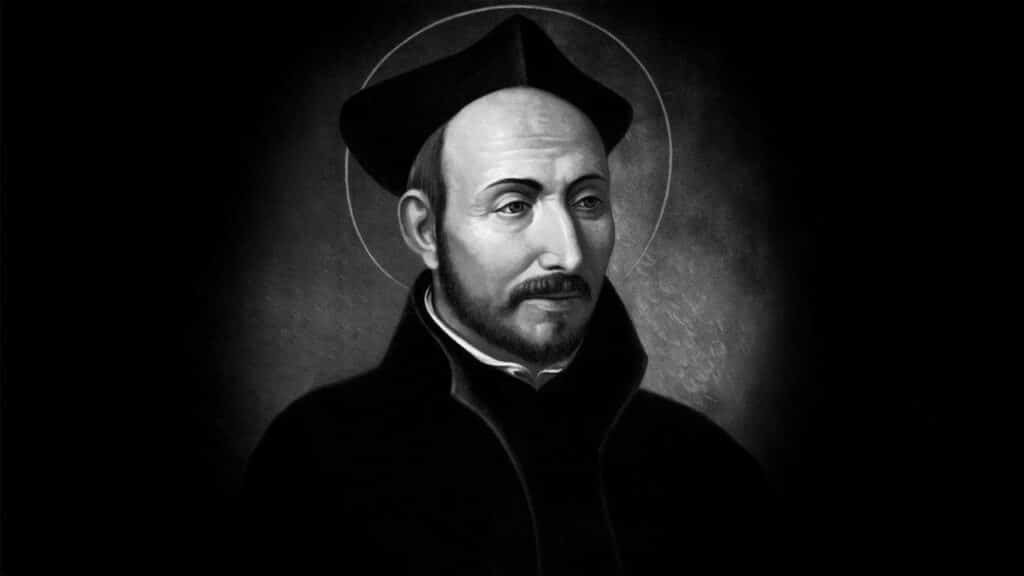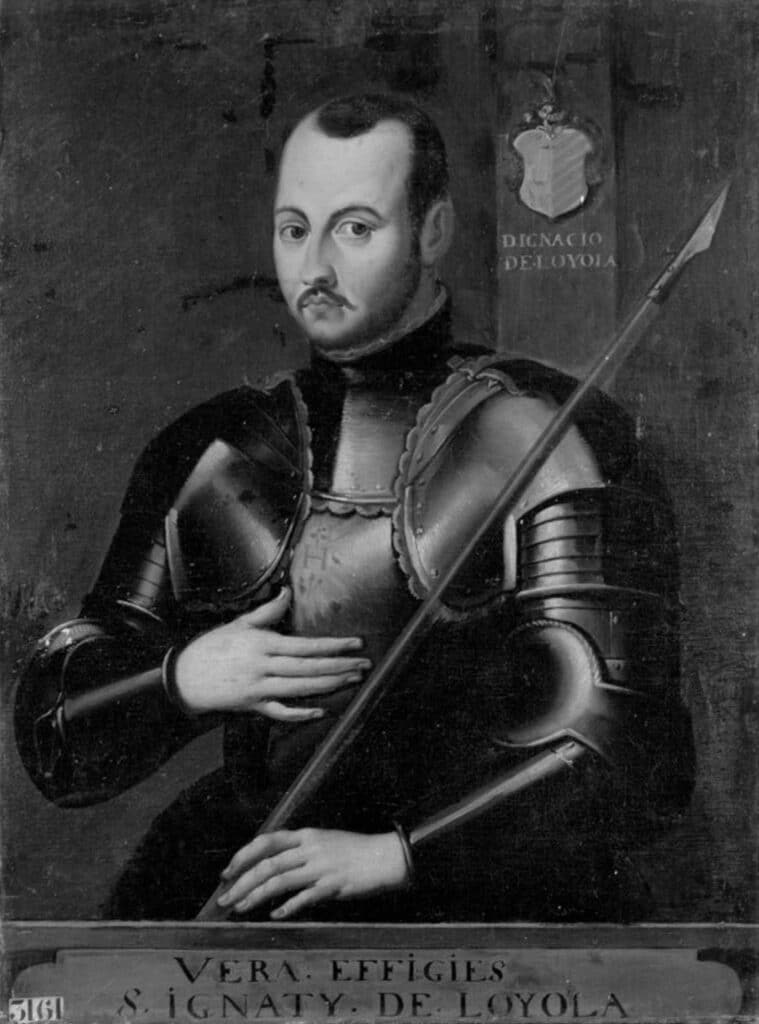
You may have seen the name of St. Ignatius of Loyola before – possibly as the name of a university, publisher, or ministry. But who was St. Ignatius of Loyola? St. Ignatius of Loyola was born Íñigo López de Loyola in the Basque country of Spain – sometime around 1491. He was raised to be a courtier but eventually went to the military.
After being injured in batttle, Ignatius had a great conversion of faith that led him to change his life dramatically. Putting down his sword, he became a pilgrim who devoted his life to God. His experiences as a pilgrim led him to write The Spiritual Exercises, which he devoted his life to teaching.
In time, Ignatius drew loyal followers, and when that group began to formally organize itself, they became the Society of Jesus (better known today as the Jesuits).
St. Ignatius, the Soldier
St. Ignatius of Loyola was a soldier – first for the military and then for Christ. He was fearless. It was this that first drew me to him.
Born as Íñigo López in the Basque Country of Spain, he dreamed of becoming a great warrior to gain wealth, fame, and to “win the girl.” His military career was going pretty well until a cannonball put a stop to all of that.

Still, not one to give up, Ignatius went through multiple surgeries to try and repair his leg. This was not simply functional, either. He did not like the way his leg looked – fearing that it would impact how others looked at him – so he went through many grueling procedures for cosmetic reasons alone.
The Conversion of Ignatius of Loyola
All of the surgeries left Ignatius with time on his hands as he recovered. Despite his leg, he still dreamed of becoming a great knight and winning over the fair maiden. These thoughts continued to drive him, but he still needed something to do.
In the castle where he stayed, he was given two books to read on the life of Christ and the lives of the saints. Over time, he began imagining his own life as a saint. Instead of becoming a great knight, what if he became a great saint instead?
And then he started to notice something.
When he imagined a life in the military, it excited him but eventually those feelings faded and left him unsatisfied. However, when he thought about following in the footsteps of the saints, those feelings brought him a joy he did not expect, and it was a joy that lasted throughout the day. He started to realize how his thoughts, feelings, and imagination could speak to him in a different way.
This was the beginning of the Discernment of Spirits.
Ignatius Gives His Life to Christ
Called to a new path, Ignatius set out to make a new life for himself. It began at Montserrat where he left his sword behind and took on the clothes of a pilgrim. He moved on to Manresa where he served the poor and lived in a cave. He begged for his food and spent his time serving those less fortunate than himself.
During this time, he began to formulate his greatest work: The Spiritual Exercises. Meant as a guide for a retreat, it contains many of the core principles that Ignatian Spirituality is known for today. Through his own experiences of prayer, fasting, and meditation, he developed a guide to help others enrich their relationships with Christ in the same way.
Ignatius and Education
When I first learned about Ignatius, another thing that drew me to him was his pursuit of education. At the time, I was an adult student myself – choosing to go back to school after my days in the military. So I instantly identified with Ignatius’s decision to do the same.
Ignatius actually took it a step further. He still needed a more elementary education, so he went back to grammar school and took classes with kids much younger than him (he was in his 30s at this point). Still, he had the humility to do this so that he could move on to pursuing a higher theology degree.
But why was this education necessary?
The Spanish Inquisition. Yes, that Inquisition – famous for burning heretics at the stake.
During this time, Ignatius continued to develop his Spiritual Exercises. When he arrived in Paris to pursue a Master’s degree, he made an impression on some of his fellow students. They included men who would go on to become saints themselves, such as Saints Francis Xavier and Peter Faber, who were his roommates at school.
Ignatius, Founder of the Jesuits
Together, Loyola and his new companions went on to take vows to continue the work Ignatius had started. Together, they formed the Society of Jesus – or as it is more commonly known, the Jesuits. While many groups are named after their founder (the Dominicans, the Franciscans, and so on), Ignatius wanted the focus to always remain on Jesus and not on himself.
The group elected Ignatius to be the first Superior General of the order, much to his chagrin. He wanted to continue serving the people, but through careful discernment, he realized that this is what God was calling him to do.

The Jesuits continue serving the church to this day. They are well known for their educational ministries – especially the many universities that they have founded (many credit them for inventing modern university structure). They are also known for their social justice ministries (cura personalis) and of course for their many retreat houses (to offer the Spiritual Exercises and other similar retreats).
The legacy of St. Ignatius of Loyola continues to live on, both through the Jesuits and through “pilgrims” like myself, who spend their days trying to teach the world about Ignatian spirituality.
What’s Next?
Would you like to learn how to apply Ignatian spirituality to your life? When you’re ready to take the next step, book your FREE, no obligation consultation for spiritual direction.
